After looking into the countries with the highest life expectancies, we decided to take a look at the opposite end of the rank and focus on countries where people live the shortest lives on Earth. Generally, the average life expectancy of humans has an increasing tendency. Just in the United States alone, for example, the average life expectancy has increased by ten years over the past five decades. Yet, there are still many countries where people live very short lives.
There are various factors that influence life expectancy, including diet, public health, medical care, economic circumstances, gender differences, crime rate, wars etc. With that said, it comes as no surprise that most of countries with the lowest life expectancy are located in poor African and war-torn regions. It’s still surprising however, to come face to face with the fact that there are countries with average life expectancies of under 50 years. Compared to the Hong-Kongers or the Japanese who live nearly 84 years on average, it is significantly less! To find out what countries have the shortest average life spans in the world, check out the 25 Countries With The Lowest Life Expectancy In The World.

Botswana (53.33)
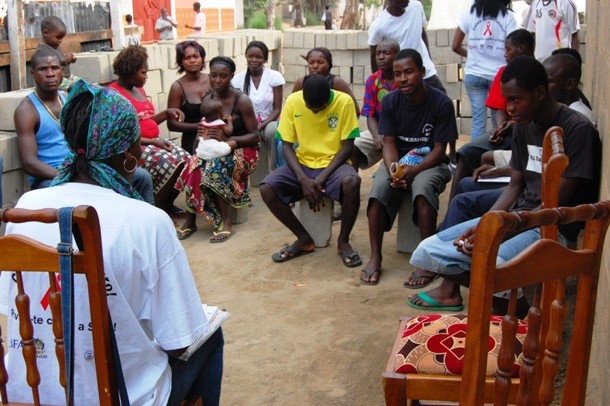 Source and image: en.wikipedia.org
Source and image: en.wikipedia.org Starting off our list with the lowest life expectancies is Botswana. This mid-sized South African country of just over 2 million people enjoys relative political stability and socioeconomic prosperity (compared to other countries on the list). However, Botswana suffers from an HIV/AIDS epidemic with around a quarter of its population being infected. Therefore, it is understandable why local people only live 53.3 years on average.
Niger (53.08)
 Source: en.wikipedia.org, image: commons.wikimedia.org
Source: en.wikipedia.org, image: commons.wikimedia.org A landlocked country in West Africa, Niger faces serious challenges due to its inhospitable desert terrain, poverty, high fertility rates and overpopulation without birth control. Apart from a very low life expectancy, Niger also has the sad primacy of the world’s highest infant mortality rate as there is not adequate nutrition for most of the poor country´s children.
Ivory Coast (53.02)
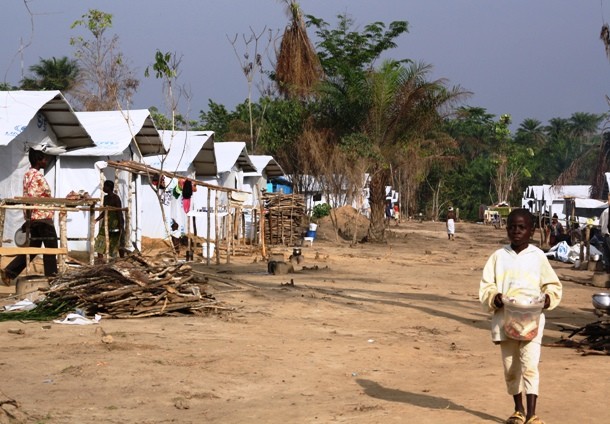 Source: en.wikipedia.org, image: flickr.com
Source: en.wikipedia.org, image: flickr.com Another West African country, Ivory Coast has a relatively high income per capita but in terms of healthcare, it still has a lot to work on. There is an enormous lack of physicians in the country (only 12 physicians per 100,000 people) and more than a third of local women undergo female genital mutilation, an extremely painful practice as a result of which many girls and women die. Moreover, HIV/AIDS is also a significant problem.
Guinea (52.44)
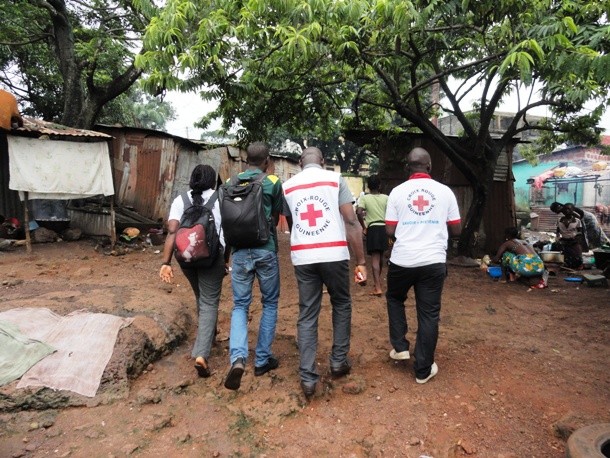 Source: en.wikipedia.org, image: flickr.com
Source: en.wikipedia.org, image: flickr.com Home to about 10.5 million people, Guinea is where the infamous 2014 Ebola epidemic originated. Apart from this virus, the country struggles to cope with several other deadly diseases such as HIV/AIDS and malaria. Degradation of care practices, limited access to medical services, inadequate hygiene practices and a lack of food diversity are also reasons why the Guineans only live 52.44 years on average.
Uganda (52.24)
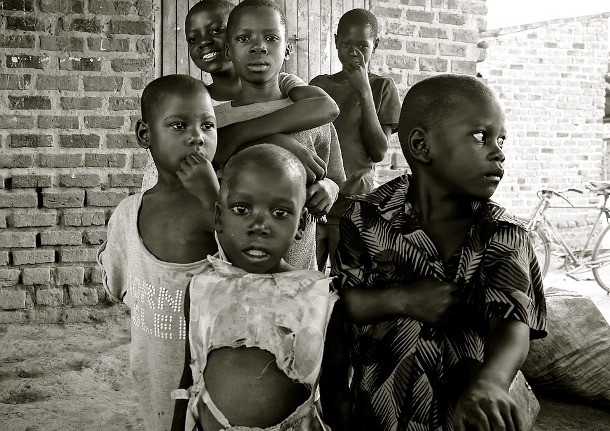 Source: en.wikipedia.org, image: pixabay.com
Source: en.wikipedia.org, image: pixabay.com The world’s second most populous landlocked country, Uganda has been suffering from frequent conflicts, including a lengthy civil war which has caused tens of thousands of casualties and displaced more than a million people. Uganda has achieved some partial successes in their fight against HIV/AIDS but death from pregnancy-related complications and very high infant mortality remain considerable problems in this East African country.
Malawi (51.55)
 Source: en.wikipedia.org, image: commons.wikimedia.org
Source: en.wikipedia.org, image: commons.wikimedia.org One of the smallest African countries, Malawi is a poor, rural country that has been failing to improve its under-developed healthcare. While Malawi has been making some progress on decreasing child mortality and reducing the incidences of HIV/AIDS and some other diseases, it still struggles with enormous maternal mortality and female genital mutilation occurrence.
South Africa (51.20)
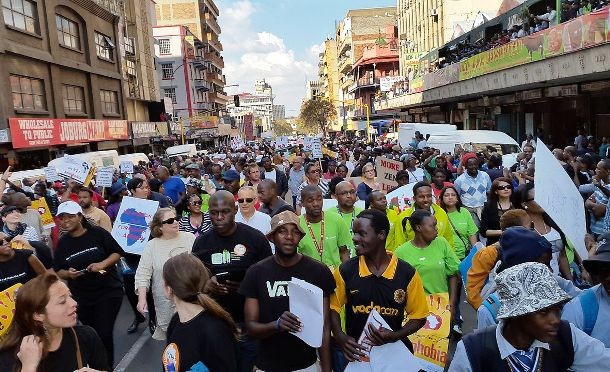 Source and image: en.wikipedia.org
Source and image: en.wikipedia.org As South Africa is one of the most affluent and prosperous countries in Africa, it might be surprising to see this country on our list but there is a good reason for that. In fact, there is a big difference between the average life expectancy of black South Africans (48 years) and white South Africans (71 years). With only 16% of the population covered by medical schemes, South Africa has an estimated 6.3 million people living with HIV – more than any other country in the world.
Nigeria (50.26)
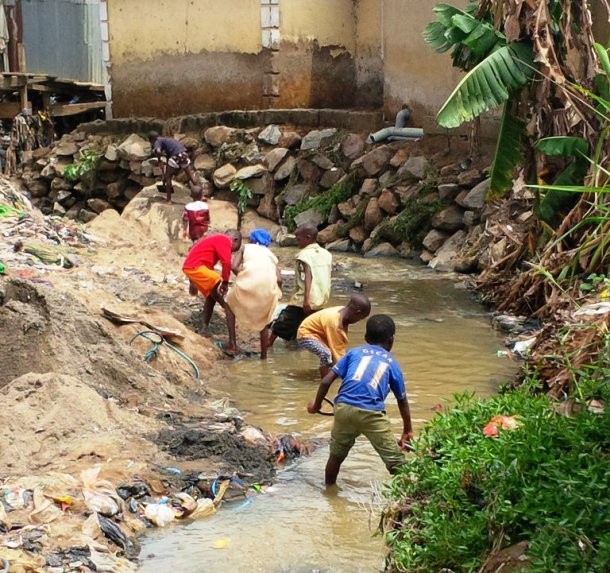 Source: en.wikipedia.org, image: flickr.com
Source: en.wikipedia.org, image: flickr.com With its 182 million inhabitants, Nigeria is the most populous country in Africa and the 7th most populous country in the world. Unfortunately, only half of the population has access to potable water and appropriate sanitation, which – combined with widespread sectarian violence and other socio-pathogenic problems – has resulted in a very low average life expectancy.
Somalia (50.24)
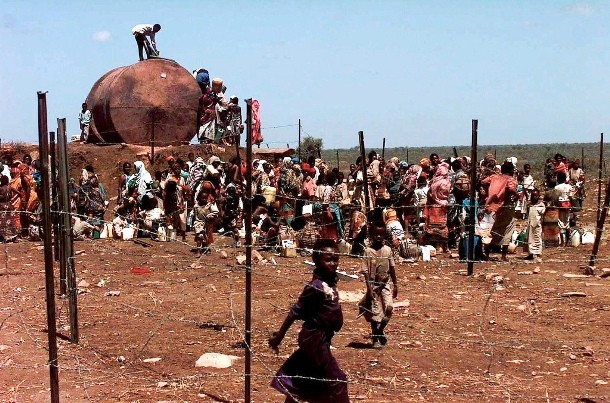 Source: en.wikipedia.org, image: flickr.com
Source: en.wikipedia.org, image: flickr.com Located in Eastern Africa, Somalia is a poor, mid-sized country notorious for ongoing civil war and unrests as a number of armed factions have been competing for influence in the country. Somalia’s public healthcare system as well as other parts of its infrastructure was largely destroyed during the war, leaving most of its population without access to basic healthcare and medical services.
Equatorial Guinea (50.10)
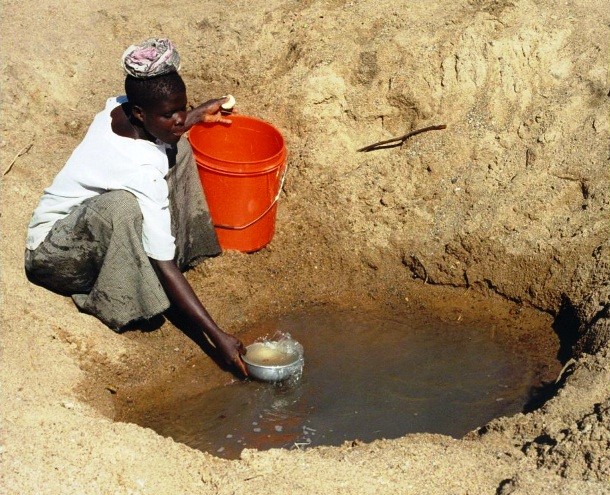 Source and image: en.wikipedia.org
Source and image: en.wikipedia.org A major oil producer, Equatorial Guinea is the richest country per capita in Africa but the wealth is distributed unevenly and only a few people can benefit from the oil riches. Consequently, most of this country´s population cannot even afford clean drinking water and proper medical care, which is also why 20% of local children die before reaching the age of five.
Mali (49.99)
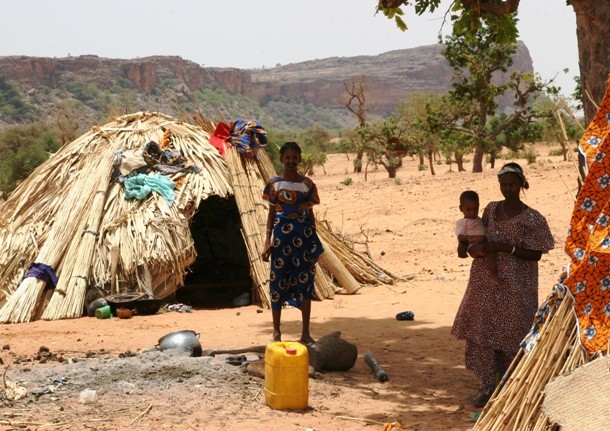 Source: en.wikipedia.org, image: commons.wikimedia.org
Source: en.wikipedia.org, image: commons.wikimedia.org Home to about 15 million people, Mali faces numerous health challenges related to poverty, malnutrition, and inadequate hygiene and sanitation. Mali’s health and development indicators rank among the worst in the world. Medical facilities and medicines in general are very limited here. Also, it is estimated that up to 90% of Mali’s girls and women undergo female genital mutilation which often has fatal consequences for them.
Cameroon (49.97)
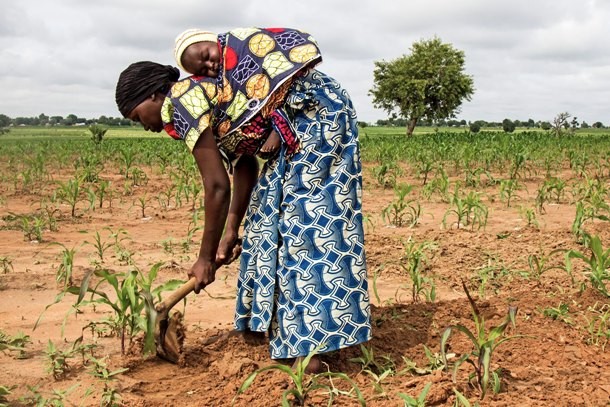 Source: en.wikipedia.org, image: youtube.com
Source: en.wikipedia.org, image: youtube.com Located in West Africa, Cameroon enjoys relatively high political and social stability but large numbers of Cameroonians live in poverty as the wealth and power lies firmly in the hands of the authoritarian president. Qualified doctors and nurses emigrate because of the inadequate payment they would get in the country. Apart from diseases like dengue fever and malaria, the female population is also decimated by inhumane practices such as breast ironing.
Angola (49.62)
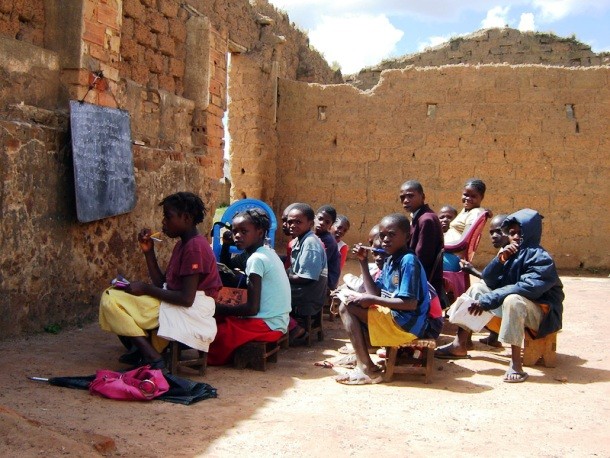 Source: en.wikipedia.org, image: commons.wikimedia.org
Source: en.wikipedia.org, image: commons.wikimedia.org Africa´s seventh largest country, Angola has the same problem as Cameroon. The country´s economy is flourishing but the standard of living remains low for the majority of the population, and life expectancy and infant mortality rates in Angola are among the worst in the world. Epidemics of cholera, malaria, rabies, hemorrhagic fevers and tuberculosis have had a huge impact on Angolans´ health.
Burundi (48.81)
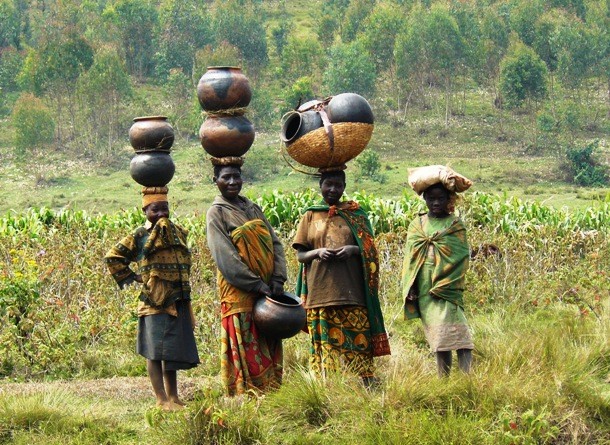 Source: en.wikipedia.org, image: commons.wikimedia.org
Source: en.wikipedia.org, image: commons.wikimedia.org One of the world´s most densely populated countries, Burundi has been through uneasy times. Bouts of ethnic cleansing and ultimately two civil wars and genocides during the 1970s and again in the 1990s left the country undeveloped and extremely poor. Burundians often have to deal with weak infrastructure, poor access to health and education services, and even hunger. No wonder this country has an average life expectancy of just 48.8 years.
Mozambique (48.57)
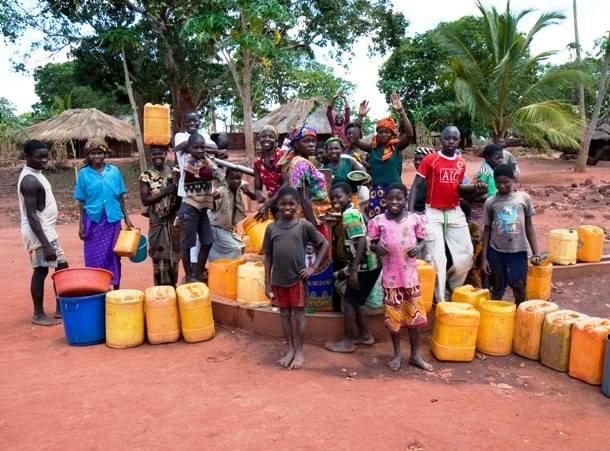 Source and image: en.wikipedia.org
Source and image: en.wikipedia.org The Mozambique Civil War (1977 – 1992) led to a great setback in the primary health system in this Southeast African country. With just 3 physicians per 100,000 people, it is very difficult for the locals to get even the very basic medical care. As a result, both infant and maternal mortality are very high while the average life expectancy is the 11th lowest in the world.
Chad (48.52)
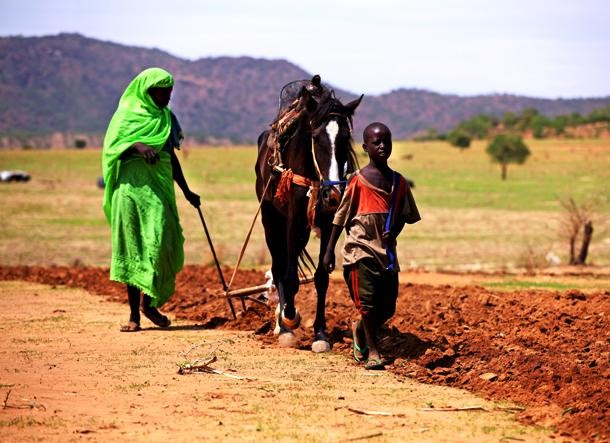 Source: en.wikipedia.org, image: public-domain-image.com
Source: en.wikipedia.org, image: public-domain-image.com Constantly plagued by political violence and recurrent attempted coups d’état, Chad is one of the poorest and most corrupt countries in the world. Chad’s cities face serious difficulties of municipal infrastructure; only 48% of urban residents have access to potable water and only 2% to basic sanitation. People living in rural areas are even worse off as they often lack even food and basic every-day supplies.
Democratic Republic of Congo (47.42)
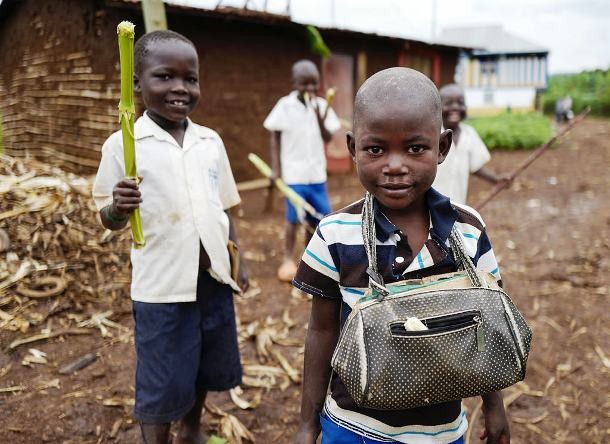 Source: en.wikipedia.org, image: flickr.com
Source: en.wikipedia.org, image: flickr.com The second largest country in Africa by area, the Democratic Republic of Congo is extremely rich in natural resources, but political instability, lack of infrastructure and centuries of both commercial and colonial exploitation have made this country very poor. Affected by numerous serious diseases such as malaria and yellow fever, Congo has the world’s second-highest rate of infant mortality and its average life span is just 47.4 years.
Swaziland (47.36)
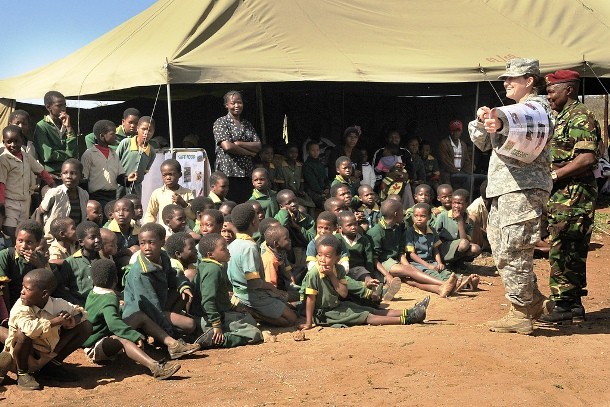 Source: en.wikipedia.org, image: flickr.com
Source: en.wikipedia.org, image: flickr.com In Swaziland, a little developing country in South Africa, HIV/AIDS and tuberculosis are the main causes of its very low average life expectancy. In fact, Swaziland has the highest HIV infection rate in the world with about 26% of all adults being infected with this deadly disease. Tuberculosis is not as widespread as HIV but its mortality rate of 18% makes it a big problem as well.
Afghanistan (47.32)
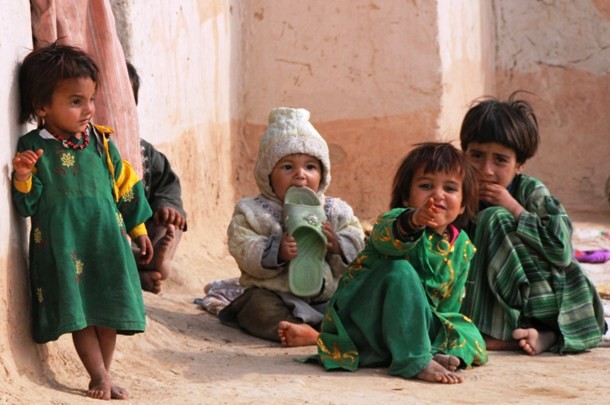 Source: en.wikipedia.org, image: flickr.com
Source: en.wikipedia.org, image: flickr.com The only non-African country on the list, Afghanistan has been known as one of the most war-torn regions in the world. With its health system badly affected by the current conflicts, the country has one of the highest maternal mortality rate in the world as well as the highest infant mortality rate in the world. Apart from that, about 80,000 people are missing limbs; most of these were injured by landmines.
Zambia (46.93)
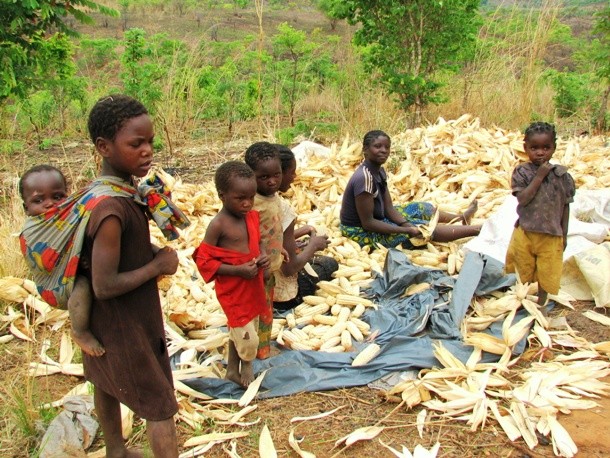 Source: en.wikipedia.org, image: commons.wikimedia.org
Source: en.wikipedia.org, image: commons.wikimedia.org Once quite a prosperous country, Zambia fell into poverty after international copper prices declined in the 1970s. Since then, the country has been struggling to cope with a number of challenges including a widespread HIV/AIDS epidemic, lack of health facilities, lack of water supply and sanitation etc. Moreover, as almost 70% of local people live below the national poverty line, medical care is often unaffordable for them.
Guinea-Bissau (46.76)
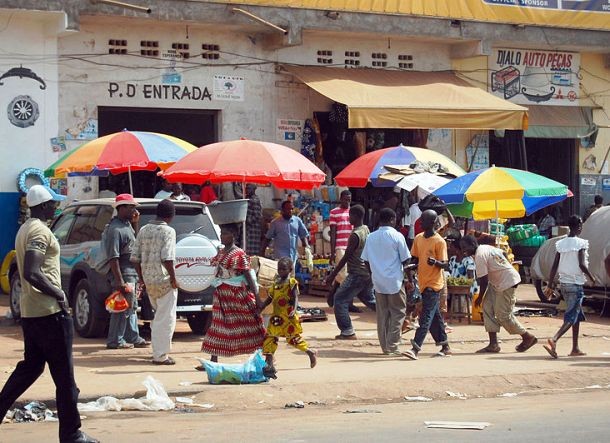 Source: en.wikipedia.org, image: commons.wikimedia.org
Source: en.wikipedia.org, image: commons.wikimedia.org Located in West Africa, Guinea-Bissau has extremely bad records in practically all healthcare-related fields. There are fewer than 5 physicians per 100,000 persons in the country; 9% of the population is infected with malaria while cholera rates are on the rise. Maternal and infant mortality reach alarming numbers in Guinea-Bissau and it is estimated that about half of local women had undergone female genital mutilation.
Zimbabwe (46.59)
 Source: en.wikipedia.org, image: commons.wikimedia.org
Source: en.wikipedia.org, image: commons.wikimedia.org Led by infamous authoritarian president Mugabe, Zimbabwe is rich in natural resources but the country´s violent domestic policy and civil unrests have prevented it from any major development. The health system of the country collapsed, leaving the Zimbabweans with totally insufficient access to medical care. Consequently, the population has been decimated by plagues, HIV/AIDS pandemic, cholera and other diseases.
Sierra Leone (46.26)
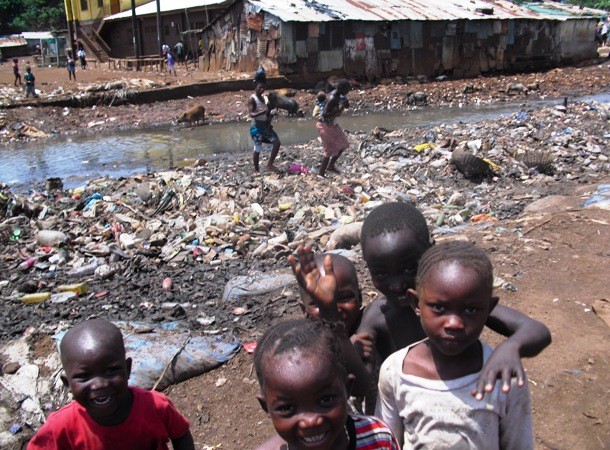 Source: en.wikipedia.org, image: commons.wikimedia.org
Source: en.wikipedia.org, image: commons.wikimedia.org A small West African country, Sierra Leone has been affected by the Sierra Leone Civil War (1991 – 2002) that left more than 50,000 people dead, much of the country’s infrastructure destroyed, and over 2 million people displaced. More recently, the 2014 Ebola outbreak overburdened the weak healthcare infrastructure, leading to more deaths from medical neglect than Ebola itself. The country now has an extremely low life expectancy at just over 46 years.
Lesotho (46.02)
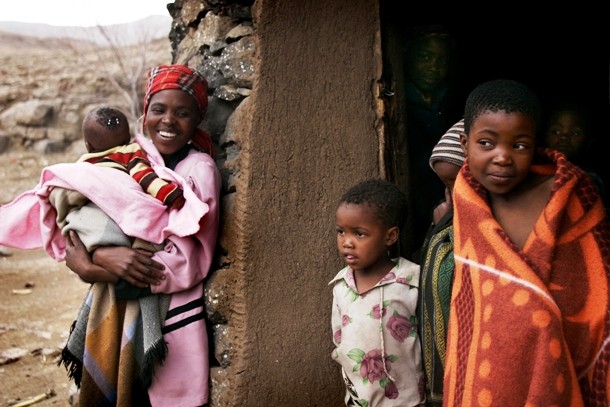 Source and image: en.wikipedia.org
Source and image: en.wikipedia.org Completely surrounded by South Africa (Nr. 19), Lesotho is a small country with just over 2 million inhabitants. In this country, an enormous HIV/AIDS prevalence is one of the biggest problems. In the most urban areas, about 50% of women under 40 are infected with the virus. However, the situation has been slowly improving. In 2006, life expectancy in Lesotho was estimated at just 42 years while these days, it is over 46 years.
Central African Republic (45.91)
 Source: en.wikipedia.org, image: flickr.com
Source: en.wikipedia.org, image: flickr.com One of the poorest countries in the world, the Central African Republic had the second lowest level of human development, ranking 187th out of 188 countries in 2014. As the country´s population has been permanently devastated by a variety of diseases and health-related problems including measles, malaria, HIV/AIDS, female genital mutilation etc., it currently has the lowest average life expectancy in the world at less than 46 years.



























